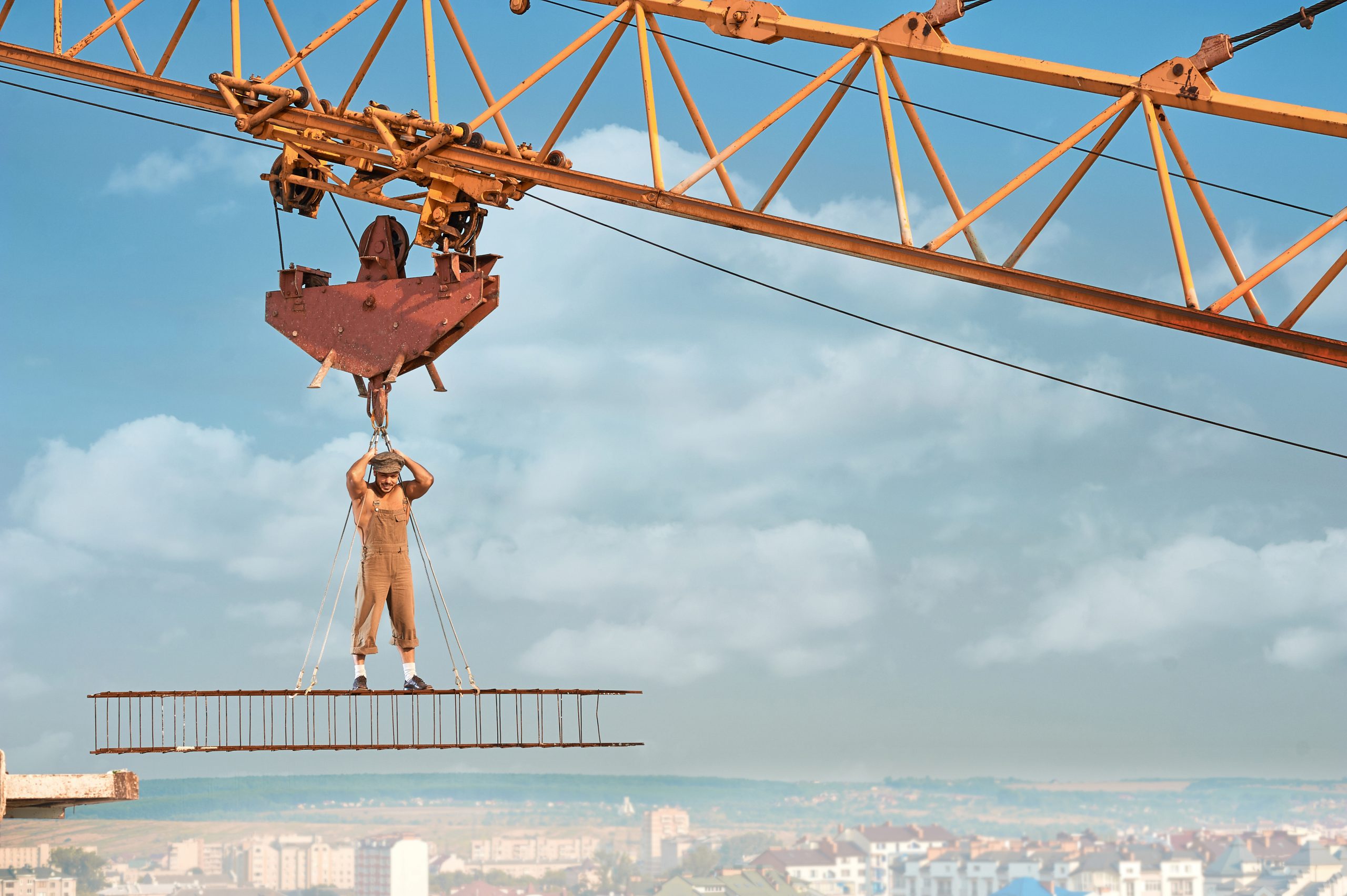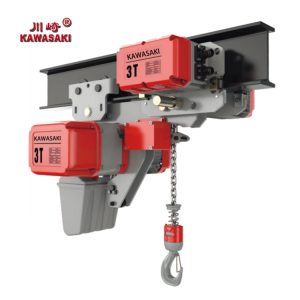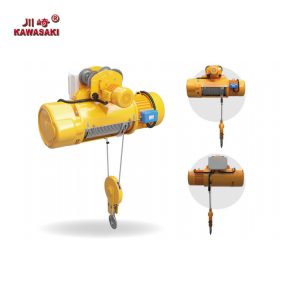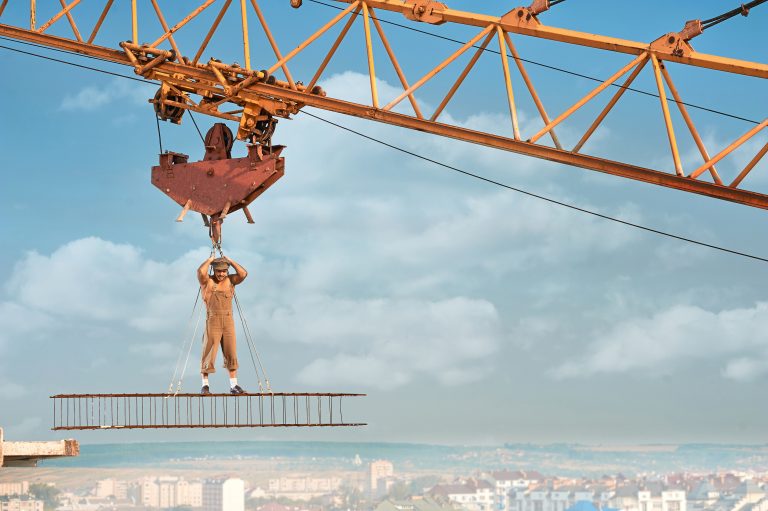Electric chain hoists are a critical component in industrial, construction, and logistics sectors worldwide. Designed to lift, lower, and position heavy loads with minimal human effort, their efficiency and safety are heavily dependent on the quality of the power supply. However, regional variations in electrical infrastructure—especially voltage instability, frequency fluctuations, and grid unreliability—pose significant challenges to their operation. This article explores how these infrastructural inconsistencies affect the safe and efficient use of electric chain hoists and outlines strategies to mitigate the risks.
1. Understanding Electric Chain Hoists and Power Requirements
Electric chain hoists are powered by electric motors and controlled via pendant switches or remote controls. Most units require consistent electrical input to operate within optimal performance specifications. Depending on the model, these hoists may run on single-phase or three-phase AC power, with specific voltage and frequency requirements (e.g., 220V, 380V, 50Hz, or 60Hz). Unlike manual hoists, electric hoists rely entirely on the grid or an alternate power source, making them sensitive to electrical anomalies.
2. Key Aspects of Regional Electrical Infrastructure Variability
Regions across the globe experience differing levels of grid development. Factors influencing these differences include:
-
Voltage instability (overvoltage or undervoltage conditions)
-
Frequency fluctuations (deviation from 50 Hz or 60 Hz)
-
Power outages and blackouts
-
Phase imbalance in three-phase systems
-
Harmonic distortion and electrical noise
Developing countries, rural areas, and disaster-prone zones are particularly vulnerable to such inconsistencies.
3. Impact of Voltage Instability on Electric Chain Hoists
a) Undervoltage Conditions
Undervoltage occurs when the voltage supplied falls below the hoist’s required input level. This can lead to:
-
Motor overheating: Due to insufficient torque, motors draw more current to compensate, leading to heat buildup.
-
Reduced lifting speed: Inefficient motor performance causes slow and jerky operations.
-
Tripping of overload protection: Prolonged undervoltage can activate safety mechanisms, stopping operations.
-
Increased wear and tear: Repeated strain on electrical components shortens the hoist’s lifespan.
b) Overvoltage Conditions
Overvoltage poses its own set of risks:
-
Electrical insulation breakdown: Excess voltage can damage internal wiring and insulation.
-
Control circuit failure: Sensitive components in control panels or VFDs (Variable Frequency Drives) may fail.
-
Accidental over-speeding: If not regulated, motors may run faster than rated, jeopardizing load control.
4. Consequences of Grid Unreliability
a) Power Outages
Sudden power loss mid-operation is one of the most dangerous scenarios for hoist operations. It can result in:
-
Load dropping or suspension: If no mechanical brake or fail-safe is present, the load may fall.
-
Operational downtime: Productivity halts until power is restored or backup sources are activated.
-
Equipment reset and recalibration: Systems may need to be rebooted or checked for faults before reuse.
b) Brownouts and Frequent Fluctuations
Chronic minor dips or spikes strain electronic components, especially hoists with programmable controllers, causing intermittent failures or erratic behavior.
5. Phase Imbalance and Frequency Variation in Three-Phase Systems
Many industrial-grade electric hoists rely on three-phase power. A phase imbalance—where one or more phases supply different voltage levels—can lead to:
-
Uneven motor torque, causing vibrations or skewed lifting paths
-
Motor burnout from prolonged unbalanced operation
-
Failure of protection relays that rely on balanced phase input
Frequency deviations, although less common, can affect VFD-regulated hoists. If frequency falls below normal, it alters motor speed and efficiency.
6. Electrical Noise and Harmonics
Poor-quality power with high harmonic distortion, often found in heavily industrialized or mixed-use electrical grids, can:
-
Interfere with hoist control systems such as PLCs and VFDs
-
Trigger false alarms or emergency stops
-
Shorten lifespan of electronic control units
In regions where industrial plants, arc furnaces, or unregulated generators feed into the same grid, such issues are increasingly prevalent.
7. Safety Risks for Operators and Equipment
When electric hoists are subject to unreliable power conditions, safety risks rise significantly:
-
Unpredictable load motion: Unexpected starts or stops can injure workers.
-
Brake failure: If the electromagnetic brake fails to engage due to power drop, loads may free-fall.
-
Compromised emergency systems: In some hoists, emergency stop circuits rely on stable voltage.
-
Fire hazards: Overheating motors and damaged insulation increase the risk of electrical fires.
8. Strategies for Safe and Efficient Operation in Low-Quality Power Environments
To ensure safe and efficient operation where grid conditions are unstable, various technical and procedural interventions can be adopted:
a) Voltage Stabilizers and Automatic Voltage Regulators (AVRs)
These devices ensure the hoist receives consistent voltage, reducing stress on motors and electronics.
b) Uninterruptible Power Supplies (UPS) or Backup Generators
A UPS or standby generator prevents load drop during blackouts and provides enough power to complete lifting cycles or safely lower suspended loads.
c) Surge Protectors and Line Filters
Surge protectors help mitigate damage from transient overvoltages, while filters block high-frequency noise and harmonics.
d) Smart Monitoring Systems
Integrating hoists with IoT-based monitors allows operators to track voltage levels, frequency, and performance in real time. Alerts can be generated when parameters fall out of acceptable ranges.
e) Redundancy in Safety Mechanisms
Use hoists equipped with dual braking systems (electromagnetic + mechanical) to prevent free fall even in sudden power loss scenarios.
f) Regular Electrical Maintenance and Load Testing
Inspecting and maintaining electrical panels, wiring, and grounding systems ensures readiness. Periodic load testing under varying power conditions helps validate system resilience.
g) Using VFDs with Power Loss Ride-Through Capabilities
Some VFDs can handle brief power losses without shutting down, helping maintain lifting continuity or initiate safe stop routines.
9. Case Study Examples: Regional Impact
a) Sub-Saharan Africa
In many African nations, grid outages are frequent due to generation shortages. Electric hoists in mining or logistics sectors must rely on diesel generators, which pose their own voltage stability issues. Adapted hoists with AVR and backup systems are necessary.
b) Rural India
Voltage fluctuations are common in rural grids, especially during peak agricultural seasons. Factories using electric chain hoists often install voltage regulators and avoid operations during low voltage hours.
c) Developed Countries with Aging Infrastructure
Even developed countries, like the U.S. or Italy, may experience localized instability due to aging transformers or overloaded urban grids. Facilities often deploy power conditioning equipment to maintain hoist reliability.
10. Design Considerations for Manufacturers
To cater to global markets with diverse power quality:
-
Multi-voltage input designs help expand usability across regions.
-
Built-in fault detection and auto-shutdown mechanisms improve operator safety.
-
Standard compliance (e.g., IEC, CE, UL) ensures performance under known tolerances.
-
Energy-efficient motors with wider operating voltage ranges enhance resilience.
11. Policy and Infrastructure Recommendations
Beyond equipment-level solutions, governments and industrial planners must invest in:
-
Grid modernization projects to reduce fluctuation and outage frequency.
-
Renewable energy with storage to buffer loads and improve reliability.
-
Training programs for operators on electrical risk awareness and emergency handling.
Conclusion
The performance, safety, and longevity of electric chain hoists are intrinsically tied to the quality of the electrical infrastructure in which they operate. In regions with unreliable grids or unstable voltage, the risks of equipment damage, operational inefficiencies, and accidents rise significantly. Through a combination of technical adaptations—such as voltage regulation, backup power systems, and intelligent monitoring—and policy-level improvements in infrastructure, these challenges can be mitigated. Manufacturers and users alike must recognize the importance of adapting to local electrical realities to ensure that electric chain hoists fulfill their potential as reliable and safe lifting solutions.




